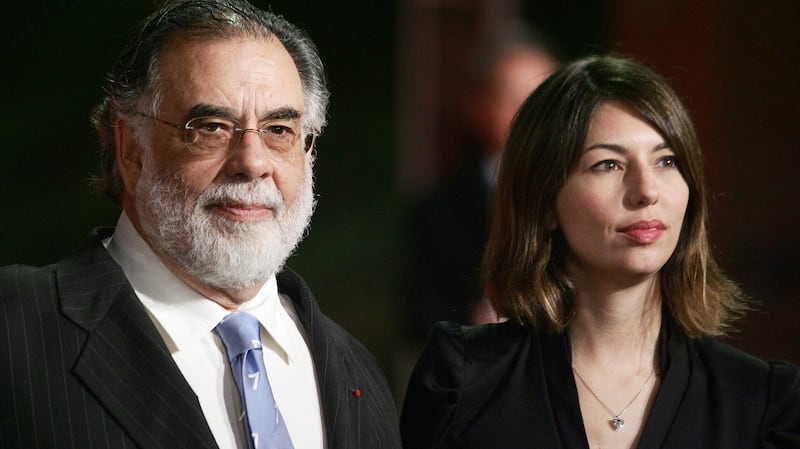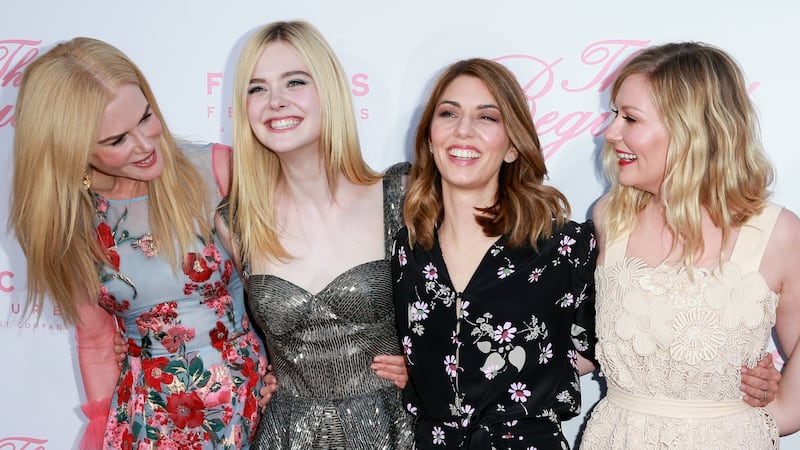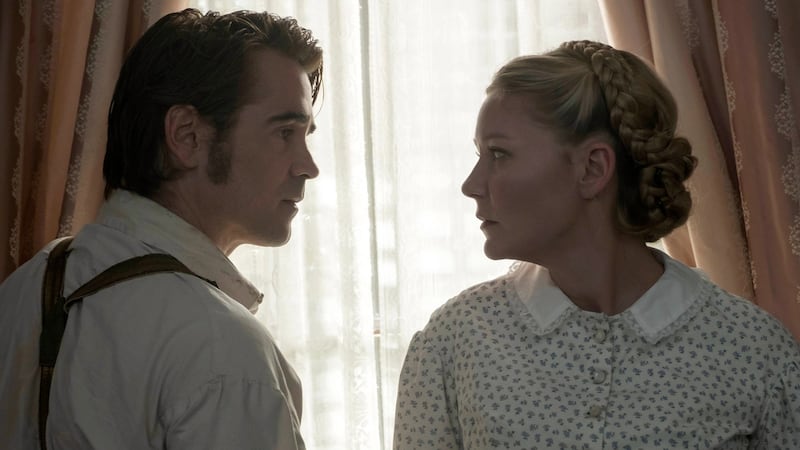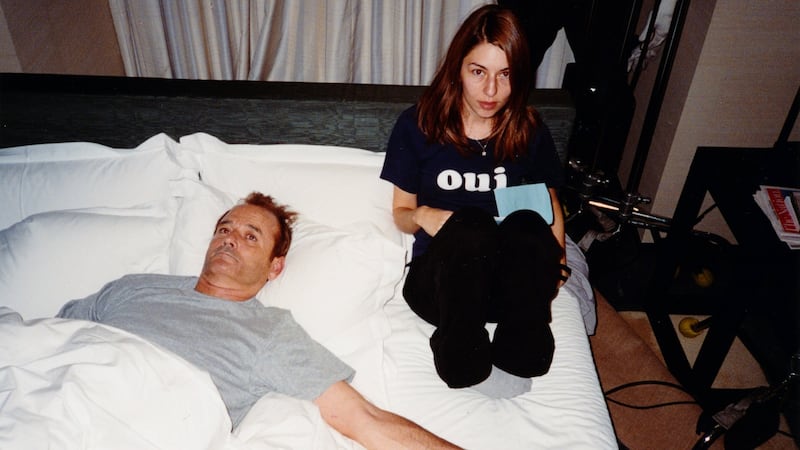Sofia Coppola enters the room noiselessly and unannounced. It’s how she does things. Her outsized dress is insanely fashionable, but low-key. Her soft voice would not startle a cranky baby.
When she arrived on the set of The Virgin Suicides (1999), her directorial debut, she soon found she had to unlearn a piece of advice from her film-maker father, Francis Ford Coppola. He had told her to be louder so the cast and crew knew she was in charge.
She, however, was never going to be heard over, say, the noisier mealtime scenes of The Godfather (1972) and had to find a quieter approach.
“I guess this means we’ve been in America too long,” she smiles. “I learned a lot – I learned everything – about film-making from my father. But I’ve had to learn to apply that in my own way. Our work, our approach, our interests, are so, so different.”

Her latest film also flies against Coppola convention. “Remake,” she notes, “was a dirty word” when she was growing up. “I remember my dad saying that no one does a remake unless they are trying to make money.”
Thus, Sofia Coppola's sixth feature started as an in-joke between the director and her production designer, Anne Ross. The picture was The Beguiled (1971), Don Siegel's pulpy Civil War-era melodrama, starring Clint Eastwood, and quite possibly the last picture one might think of as being a suitable candidate for Coppola's floaty, female style.
The film, based on a 1966 novel by Thomas P Cullinan, tells the story of an injured Union fighter who seduces several of the women at Farnsworth Seminary, a southern school for girls, using, as Coppola notes, “a very ’70s sensibility. Dark interiors. A lot of zooms. And crazy women characters.”
“I didn’t know the film,” she says. “And I wasn’t keen on the idea of remaking someone else’s film. But once [Ross] said ‘I really think you should remake this’, that seed was in my mind. And when I watched it, I thought: now, I see what she’s talking about. I thought it’d be interesting to tell the same story, but flip it to the women characters’ point of view.”
Women’s language
When Eastwood’s wounded soldier takes refuge at the all-girls school in Virginia, he becomes, as the dramatically voiced contemporaneous trailer has it, “the prisoner of these man-deprived women; these man-eager girls”. The protagonist, meanwhile, is “Clint Eastwood, the man, the symbol, the sexual enemy.”
Inevitably, Coppola has met Clint Eastwood – they sat together when they were both nominated as Best Director at the 2004 Academy Awards.
Those glances that say so much. The codes that men don't always see
Coppola's film retains the sexual rivalries but delivers them without the screeching hysteria. Every scene simmers with unspoken longing: Kirsten Dunst's lonely schoolmarm pines visibly, Elle Fanning's naughty teenager is rather more forward, and even Nicole Kidman's buttoned-up headmistress seems to thaw. Much shade – enough to power an entire series of Ru Paul's Drag Race – is thrown.

“I started thinking about that as soon as I sat down to write the script,” she says, nodding. “It was one of the things that interested me about telling the story, and something that is very specific to women. That kind of communication that is so strong, and without words.
“Those glances that say so much. The codes that men don’t always see. So men don’t seem to have that way of communicating. So it’s fun to think about that when I was writing the scenes.”
Thinking woman’s hunk
She cast Colin Farrell in the Eastwood role. There was much merriment around "the thinking woman's hunk", as Coppola calls him. The on-set photographer even took shots while he was gardening for an imaginary pin-up calendar.
“There were men on the set, but there were a lot of women in the cast and crew,” says Coppola. “So it’s a good thing Colin likes women. His sister Claudine was there. He seems very comfortable around strong women. Kirsten especially loved it: ‘The guy gets to be objectified this time. At last!’ It was fun. We haven’t done the calendar, though. We talked about it. And we have the photos.”

The film reunites Coppola with two of her regular players. Kirsten Dunst was just 16 when the director cast her in The Virgin Suicides. The duo have subsequently teamed up again on Marie Antoinette (2006) and The Bling Ring (2013), in which Dunst cameos as herself.
Elle Fanning previously worked with the filmmaker on Somewhere (2010), starring as the 11-year-old who ends up playing parent to her dad, a washed-up movie star.
“I love them both,” says Coppola. “They’re both such unique individuals with a great sense of humour. They get my sensibility. They trust me. As soon as I approach them, they jump right in. They are smart and dedicated about work. And I especially loved seeing Kirsten in this buttoned-up part. It’s the opposite of her. There’s nothing repressed or oppressed about Kirsten.”
Shoehorning slavery
In Siegel's version of The Beguiled, the late blues singer Mae Mercer portrays Hallie, a house slave and a rather thankless part. She does not appear in Coppola's version, an omission that has led to accusations of whitewashing.
Writing for Slate, Corey Atad is saddened to note that Coppola's film is shot at Madewood Plantation House, a location featured in Beyoncé's Lemonade: "There's something deeply perverse about seeing Beyoncé's groundbreaking work of black female historical reclamation appropriated by two white actresses in 1860s Southern dress."
Coppola insists that she simply didn’t want to be disrespectful by shoehorning slavery into her film.
“In the movie, the character [of Hallie] was so exploited. And when you look back to the book, the character is written in a very stereotypical way. I don’t want to represent anybody in a stereotypical way. I didn’t want to be disrespectful by treating that story or subject in a light way, or by including it in the margins. I decided that the slaves have left. And these ill-equipped southern women have to learn to survive. I really wanted to keep the film focused on the male-female dynamic and not expand it into racial politics.”
She has often expressed concern that her frequently white, privileged characters are, well, just that. But it is, she notes, the world she knows.
She was born in 1971 and grew up between the family vineyard in northern California and on various movie locations. Aged four, she and her brothers pranked each other using fake blood and corpses on the set of Apocalypse Now: the entire family lived in the Philippines for the troubled two-year production. When she was 12 the family lived in the Sherry-Netherland Hotel in New York for a year while her father made The Cotton Club. Still, film-making snuck up on her.
“I didn’t know what I wanted to do when I was younger,” she says. “I was interested in design and fashion. I dreamed about maybe being a magazine editor. When I was a kid, I would make short films for fun but I never really thought that was something I would do.”
The girl gangs
As a youngster, she was the only girl in the Coppola clan, surrounded by two older brothers, Roman and Gian-Carlo (the latter of whom died in a motorboat accident in 1986), and a gaggle of famous cousins, including Nicolas Cage and Jason Schwartzman. I wonder if the many girl gangs that populate her movies aren’t a kind of compensation for being the only girl?
“Maybe,” she nods. “Maybe I’m drawn to that because – well, I do have women friends – but growing up it was all boys. So I always wanted a sister. Girls do break into groups. And there’s a power in a group of girls. So that interests me.”

She and her French rock-star husband, Thomas Mars, have compensated for the early lack of sorority with two daughters, Romy (11) and Cosima (7). They are not yet as cine-literate as their mother.
"I worry they have bad taste," she laughs. "They like trash. I couldn't even persuade them to go to the Beauty and the Beast remake."
Last month a flurry of headlines recorded that Coppola didn't know what the Bechdel Test was when asked about it during an interview for GQ magazine. She shrugs, similarly, at such academic terms as "female gaze".
“I’m not thinking about that. I’m just expressing what I’m interested in. I’m interested in female characters. My interests and opinions are tied to my femininity. That’s just who I am and what I like to think about. So the way I look at a thing is going to be different than most men.”
- The Beguiled opens July 14th




















